When it comes to choosing a projector, there are many factors to consider. One of the biggest decisions you’ll have to make is whether to go with an LED or laser projector. Both have their pros and cons, so how do you decide which is right for you? This article will discuss the key differences between LED and laser projectors and help you decide which type is best for your needs.
What is an LED projector?
An LED projector is an advanced projection device that uses light-emitting diode (LED) technology to display images. It offers a variety of advantages over traditional projection technologies such as laser and lamp-based models, including higher brightness levels, improved image quality, and longer bulb life. Additionally, LED projectors require less maintenance than their counterparts since they are not subject to the same wear and tear associated with other types of projectors. This makes them ideal for use in business settings where they can be relied upon to provide consistent performance over long periods.
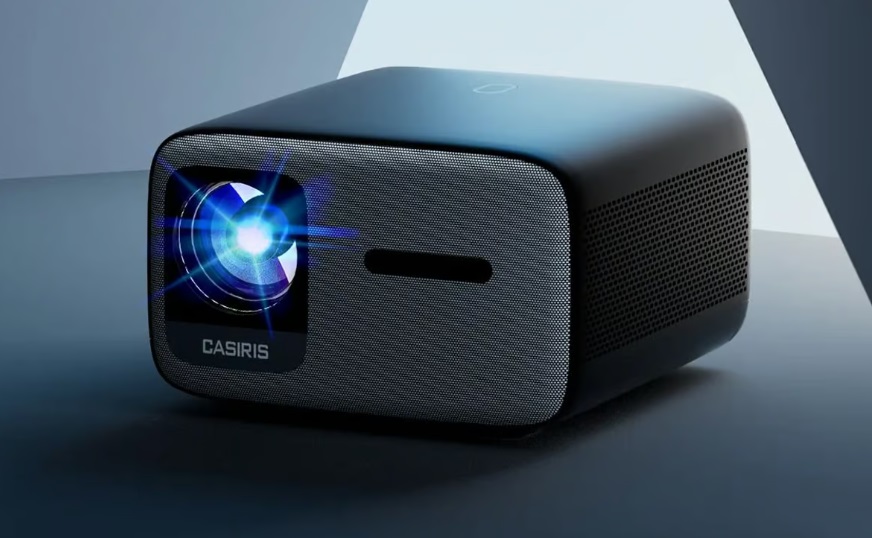
As with any electronic device, however, it is important to properly maintain an LED projector to ensure its best performance. By following regular maintenance guidelines, you can enjoy the full potential of your LED projector and ensure its longevity. Regularly cleaning the lens, replacing any worn components, and checking for any software or firmware updates will help keep your device in top condition.
Additionally, proper ventilation is critical to prevent overheating and extend the life of the lamp.
Finally, it is important to select a projector with features that match your specific needs. While some people may prefer a basic model for occasional use, others may require more advanced features such as wireless connectivity and high-resolution projection.
Knowing which features you need can help you make an informed decision when selecting an LED projector for your needs. Doing so ensures that you get the best value for your money and enjoy years of reliable performance from your device [1].
What is a laser projector?
A laser projector is a type of projector that uses lasers to project images onto a display surface. Laser projectors are capable of producing higher quality, brighter, and more accurate images than traditional LCD and DLP projectors. They also have a wider color gamut, providing deeper and richer colors than other types of projectors. Laser-based projection technology has become increasingly popular for both home theater applications and business presentations due to its superior image quality and convenience.
Laser projectors can also produce enormous displays with resolutions up to 4K or 8K depending on the model chosen. Additionally, they require less maintenance compared to conventional lamp-based projectors since the light source lasts longer, reducing downtime in between replacements. Lastly, laser projectors consume less power than traditional projectors, making them more energy efficient and cost-effective in the long run.
Overall, laser projectors offer superior image quality and convenience, ideal for both home theater setups and business presentations. They also provide a much wider color gamut than traditional LCD or DLP projectors. With their minimal maintenance requirements and energy efficiency, they are definitely worth considering if you’re looking for an advanced projection solution [2].
LED vs. Laser projector, which is better for you?
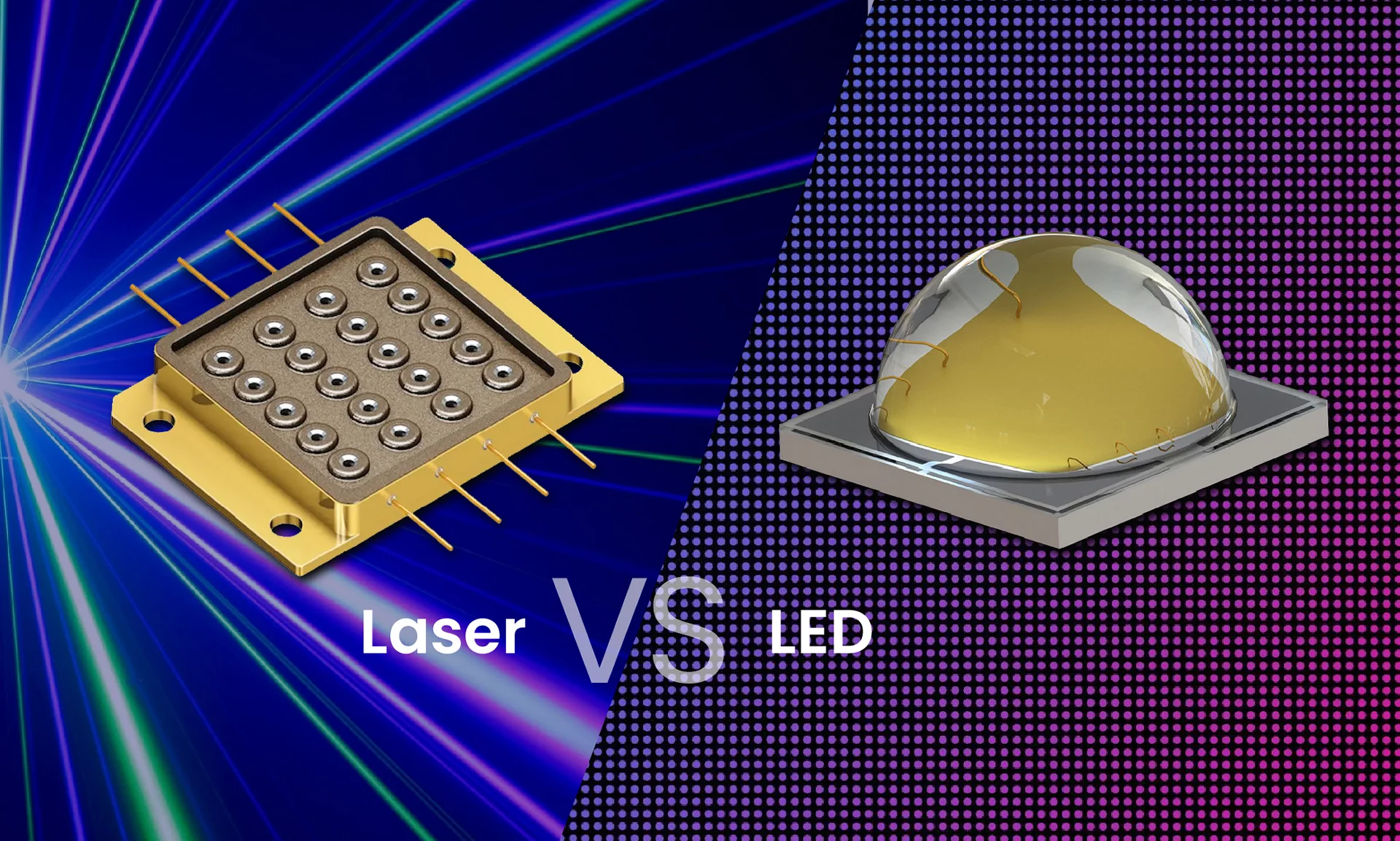
Color contrast and brightness
LED projectors offer greater color contrast than laser projectors. Due to their higher light output, they produce a brighter image of better quality. This makes them ideal for entertainment and educational purposes.
Cost Comparison
The cost of an LED projector is usually much lower than laser projectors, but this varies depending on the brand and model you choose as well as its features and specifications. While laser projectors tend to be more expensive upfront, their lower operating costs and longer life make them a better long-term investment. On average, an LED projector may cost up to 50% less than a comparable laser projector.
Portability and Installation
LED projectors tend to be smaller and more lightweight than laser models, making them easier to transport and move around. They also require less power to operate which is great for powering with batteries or when running on solar energy.
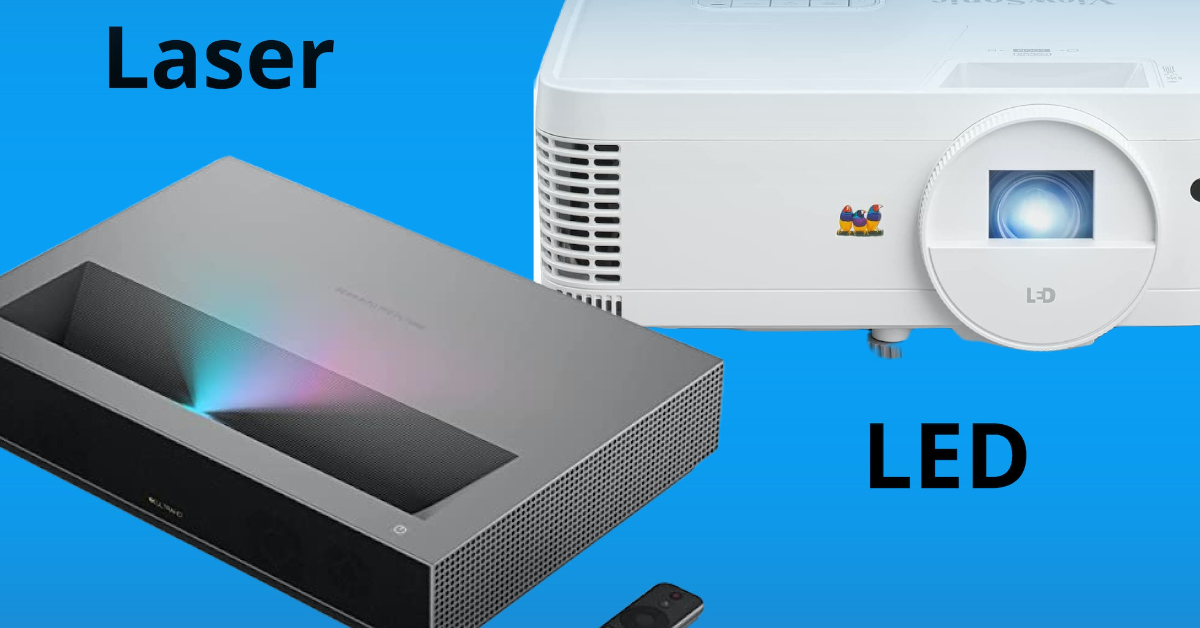
However, since they are not as powerful as their laser counterparts, the image quality of LED projectors is not quite as good. Laser projectors typically require more time and effort during installation due to the need for special mountings and positioning devices such as tripods or ceiling mounts. This makes them better suited for permanent installations in theaters or board rooms.
Duration of usage
LED projectors are known for their shorter lamp life, with some models lasting as little as 10,000 hours before needing to be replaced. Laser projectors offer significantly longer-lasting lamps, ranging from 20,000 to 30,000 hours or more, depending on the model.
Instant-use capability
LED projectors have the advantage of being able to be used almost instantly. Once powered up, they take just a few seconds to reach maximum brightness. Laser projectors require a few minutes to get up to their full potential [3].
Advantages of laser projectors over LED projectors
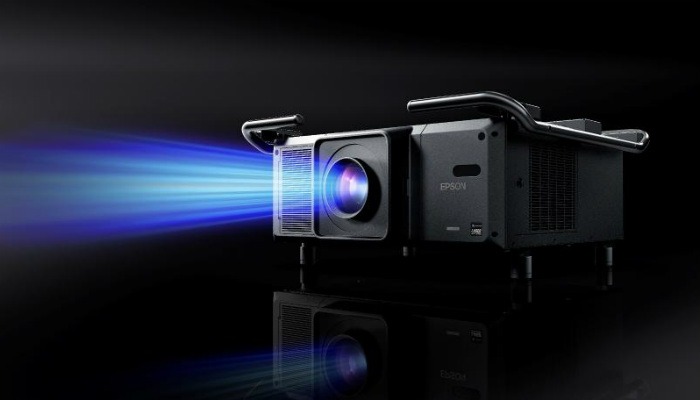
Longer shelf life with zero maintenance
LED projectors have a shorter shelf life and require more regular maintenance than laser projectors, which can last for tens of thousands of hours without any major issues. This means that businesses, classrooms, and theaters won’t need to worry about replacing the projector or paying for expensive repairs and upgrades as often with laser projectors.
Vivid Colors
Laser projectors are capable of producing vivid colors with much higher fidelity than LED projectors due to their use of lasers instead of traditional lamps. This makes them ideal for applications where color accuracy is critical such as art galleries and movie screenings.
Wider Color Gamut
Laser projection technology has a much wider range of colors and shades than LEDs, which allows for a more realistic image with more depth. This makes them ideal for applications where the colors are a crucial part of the experience such as gaming or virtual reality.
Sharper Image Quality
The sharpness of laser projectors is much greater than LED projectors due to their use of lasers instead of traditional lamps. This means that images produced by laser projectors will always appear sharper and clearer than those from LED projectors, making them ideal for presentations, lectures, movies, and other large-scale viewing experiences.
Lower Power Consumption
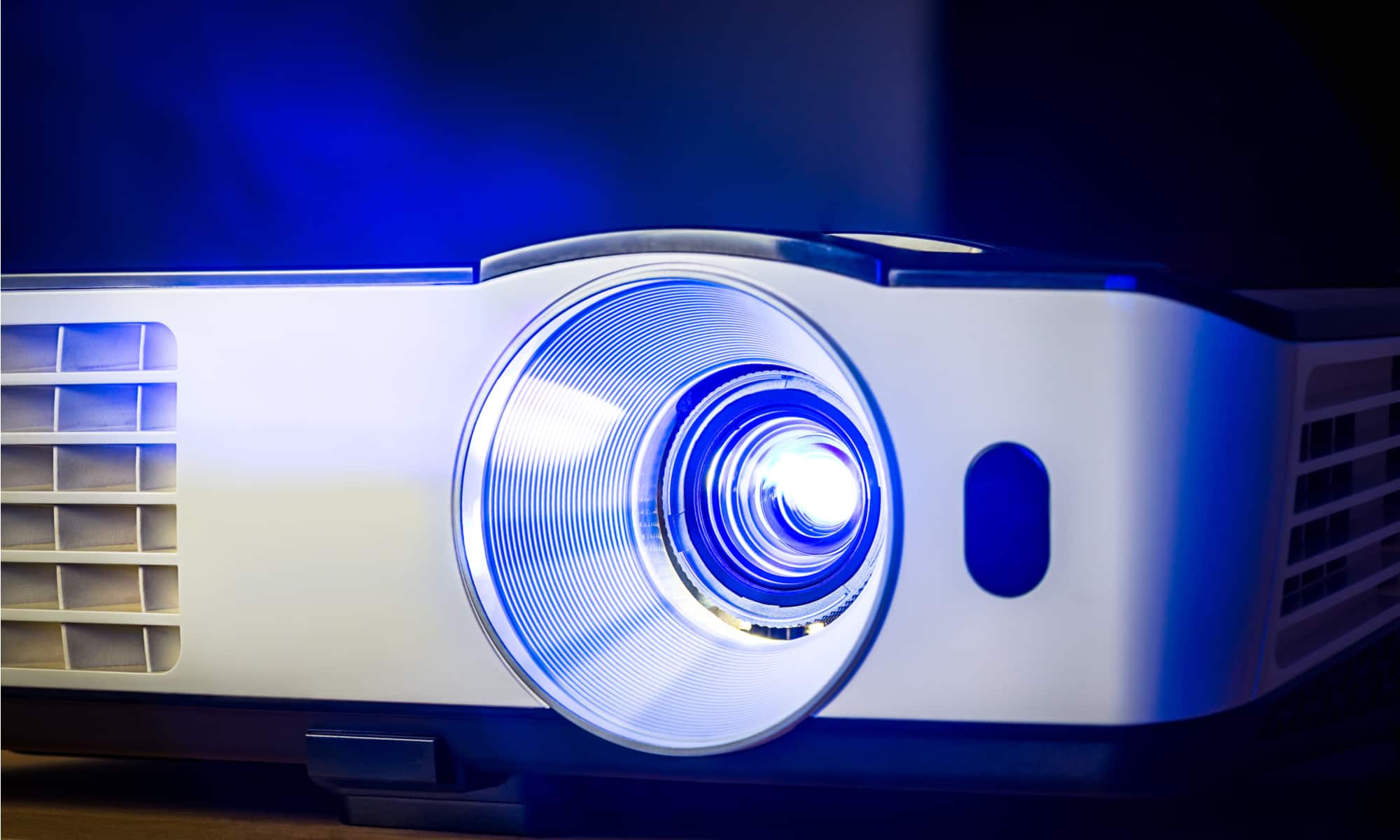
Due to their use of lasers instead of traditional lamps, laser projectors consume significantly less power than LED projectors, which can save businesses money in the long run. This, combined with their longer shelf life, makes laser projectors a more cost-effective option for businesses and organizations.
Lower Heat Output
Lasers generate significantly less heat than traditional lamps used in LED projectors. This means that laser projectors can be left running for longer periods of time without worrying about any damage caused by excessive heat output. Additionally, this reduced heat output also reduces power consumption and helps to keep costs down.
Better picture quality
Laser projectors provide a better picture quality than LED projectors due to the way they generate light. The use of lasers instead of traditional lamps produces sharper, more detailed images with more accurate colors and higher contrast ratios. This makes them ideal for applications where image fidelity is critical such as medical imaging or data visualizations.
Eco-friendly
The use of lasers instead of traditional lamps also means that laser projectors are much more eco-friendly than their LED counterparts. They produce less heat output and consume significantly less energy, making them an environmentally friendly choice for businesses, classrooms, and theaters.
360-degree installation
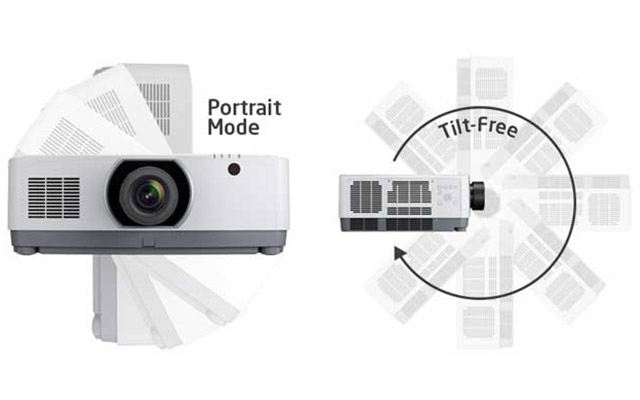
Unlike LED projectors, laser projectors can be easily installed in any direction as they don’t require a specific orientation. This allows them to be placed in more locations than LED projectors and makes installation much easier. Additionally, this also makes them ideal for immersive applications such as virtual reality or gaming.
Noiseless projection
Laser projectors are also much quieter than LED projectors due to the way they generate light. This makes them ideal for applications where noise levels need to be kept low such as lectures, presentations, or movie screenings.
Quick start-up time
Laser projectors also have a much quicker start-up time than LED projectors, which makes them ideal for applications where speed is important. This means that businesses or classrooms won’t need to wait long for the projector to power up and be ready to use.
Laser projectors have an auto-cut feature for safety
One of the great features of laser projectors is that they have an auto-cut feature, which immediately shuts off the projector in case of overheating or overloading. This helps to protect both the projector and the user from damage due to excessive heat or power draw.
How to use a LED projector?
Using a LED projector is quite simple. Here are the basic steps you need to take:
- Connect your projector to a power source and turn it on. Some projectors may require an HDMI cable, so make sure you have one ready if needed.
- Place the projector at a suitable distance from the wall or screen that you will be projecting onto. The optimal distance will depend on the model of your projector, so consult your user manual for specific details.
- Adjust the settings on your LED projector to match what type of content you’ll be displaying (presentations, movies, etc.). This will include adjusting things like brightness levels and image size.
- Connect the video source to your projector. This could be a laptop, DVD player, streaming device, or another video source. Be sure to use the correct cable type for your connection.
- Once everything is connected and adjusted correctly, you should be ready to start projecting! Simply play whatever content you wish to display and adjust settings as needed while viewing the projection.
- When finished, turn off your LED projector and disconnect all cables before unplugging it from its power source. Always allow the projector time to cool down after use before putting it away or moving it around too much.
Follow these steps and you’ll have no trouble utilizing your LED projector for any purpose! Enjoy creating amazing visuals with this versatile piece of technology.
How to use a laser projector?
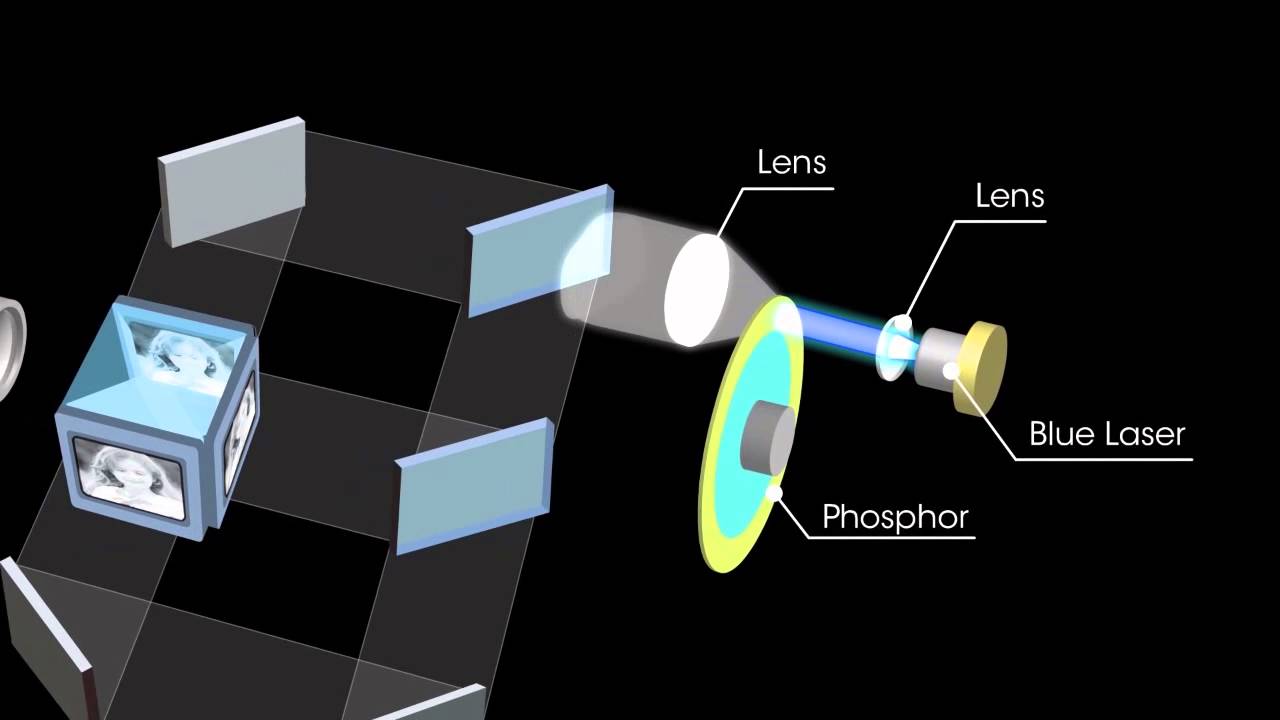
Using a laser projector is similar to using any other type of projector. There are some key steps you should take before powering on your laser projector:
- Set up the projector in the correct location and angle, ensuring that it is level and stable.
- Connect all necessary cables to the appropriate ports on both the source device (e.g., computer, DVD player) and the projector itself.
- Ensure your source device is powered on, with the correct input or media selected.
- Turn on the laser projector by pressing its power button normally located at its top-right corner or side panel and wait for it to warm up before continuing with further setup tasks including basic adjustments such as brightness, contrast, focus, and zoom.
- Once the projector is warm and adjusted to your desired settings, begin displaying your content on the wall or other preferred surfaces.
- Enjoy the vibrant visuals produced by your laser projector!
- When you’re finished using it, turn off the power switch, disconnect all cables from both the source device and projector itself, and store it in a safe place away from direct sunlight and heat sources until ready for use again.
Follow these steps to ensure optimal performance of your laser projector and an enjoyable viewing experience every time!
How to maintain laser projectors?
Maintaining laser projectors is an important step in ensuring that the projector will last for years to come. Here are some tips for maintaining your laser projector:
- Remove dust and debris from the outside of the projector regularly, taking care not to use any abrasive cleaning materials.
- Make sure you follow the manufacturer’s instructions when replacing or refilling bulbs or other internal components. Improper installation can cause damage to sensitive electronics.
- Avoid using your laser projector in extreme temperatures as it can create condensation which may damage internal components inside of the unit.
- If necessary, regularly check for lens fogging or build-up due to humidity and replace filters as needed to ensure optimal performance.
- Avoid using your laser projector with incompatible devices or computer peripherals as this can lead to power surges which may damage the projector.
- It’s important to keep your laser projector in a well-ventilated area, otherwise, it could overheat and eventually fail.
- If you experience any problems with your laser projector, have it professionally serviced by an authorized technician immediately so they can inspect and repair any potential issues.
By following these steps, you will be able to ensure that your laser projector stays in top condition for years to come!
FAQ
Are LED projectors better?
LED projectors have several advantages over traditional lamp-based projectors, including the following:
- Lower cost of ownership: LED projectors typically require less maintenance than their lamp-based counterparts, saving you money in the long run.
- Improved brightness and color accuracy: LED technology offers higher contrast ratios and greater color accuracy compared to traditional lamps, leading to better image quality overall.
- Longer life span: Because LEDs have no consumable parts (like a light bulb), they can last up to 25 times longer than standard projector bulbs, making them perfect for extended use in commercial settings or even home theater systems.
- Environmentally friendly: Since LEDs do not contain mercury like traditional lamps, they are not only better for the environment but also safer to use and dispose of.
What is the disadvantage of the LED projector?
The main downside of LED projectors is that they tend to be more expensive than traditional lamp-based projectors. Additionally, some may experience a slight decrease in brightness when compared to other projector types. Lastly, certain models may suffer from the rainbow effect (rainbow artifacts) or gamma shift issues. As such, it’s important to do your research and read reviews before investing in an LED projector. With the right model and setup, however, you can enjoy all the advantages of LED technology at a fraction of the cost and effort.
Which type of projector is best?
The best type of projector will depend on your particular needs. If you’re primarily looking for a home theater system, then an LED projector may be the right choice. However, if you need a commercial set-up or are budget conscious, then a traditional lamp-based projector could be more suitable. It is important to assess your specific requirements and select the best type of projector accordingly.
Additionally, keep in mind other factors such as resolution, contrast ratio, and brightness when making your decision. With careful consideration, you can find the perfect projector for your specific needs and budget.
Do laser projectors require a particular screen?
Yes, laser projectors are designed to be used with a specific type of screen. The most common types of screens for laser projectors are ALR (ambient light rejecting) or special reflective materials. These screens are specifically designed to reject ambient light and help to improve image quality in brightly lit rooms. Without the right kind of screen, the picture quality from a laser projector may suffer significantly.
As such, it is important to ensure that you use the right screen when setting up your laser projector system. Additionally, make sure to read manufacturer instructions and guidelines thoroughly before installing any type of projector screen.
What should I look for when buying a projector?
When shopping for a projector, there are several factors you should consider. First and foremost, decide what type of projector you need based on your specific requirements (e.g., LED vs lamp-based, resolution, contrast ratio). Secondly, always read the reviews to get an idea of what other users think about a particular model or brand. Thirdly, compare prices from different retailers and manufacturers to get the best deal possible. Finally, be sure to factor in any additional costs such as installation fees or extra equipment (e.g., projector screens). By taking all these elements into account, you can find the perfect projector for your needs.
Can I buy a laser projector for home use?
Yes, laser projectors can be used in home settings as well. Due to their bright image output and high contrast ratio, they are perfect for creating an immersive home theater experience. However, due to the higher cost of laser projectors compared to traditional lamp-based models, you may want to consider your budget before investing in one.
Additionally, make sure that you have the right screen for your projector (e.g., ALR or special reflective material) to get the best picture quality possible. With these considerations in mind, laser projectors can be a great addition to any home setup.
Can I replace a projector lamp with an LED?
In some cases, it is possible to replace a traditional lamp-based projector with an LED model. However, you should always check the manufacturer’s instructions before attempting to do so. Additionally, if your projector has specialized features such as 3D or 4K resolution, you may need to buy an entirely new projector to ensure compatibility.
Therefore, replacing a projector lamp with an LED may not be the most cost-efficient option in every case. It is important to assess your situation and determine whether this type of upgrade would be beneficial for your particular needs before making any decisions.
Are laser projectors more expensive than LED projectors?
In general, laser projectors tend to be more expensive than LED models. This is due to the higher cost of components and technology involved in manufacturing laser projectors. Additionally, the specialized screens that are required for optimal image quality from laser projectors can also add to the total cost of ownership. Therefore, if you are looking for a projector with good picture quality but want to stay within a certain budget, an LED model may be a better option.
However, if you need the highest level of image quality possible or don’t mind spending extra money on specialized equipment, then a laser projector could be worth the investment.
Do laser projectors lose brightness over time?
Laser projectors generally do not lose brightness over time like traditional lamp-based models. This is because laser light sources are designed to last much longer than lamps and don’t require frequent replacements. Therefore, you can expect your laser projector to maintain its peak brightness levels for years of use.
Additionally, they usually consume less power than lamp-based models, which can result in lower electricity bills over time. However, it is still important to regularly check your projector for any potential issues and replace any defective parts as needed.
What type of projector lasts the longest?
The type of projector that lasts the longest will depend on several factors. Generally, laser projectors tend to have a longer lifespan than traditional lamp-based models due to their more durable light source.
Additionally, LED projectors usually consume less power and can last up to 30,000 hours or longer with proper maintenance. Therefore, if you are looking for a projector with a long lifespan, then either laser or LED models could be suitable options depending on your budget and specific needs.
What happens to a laser projector after 20000 hours?
After 20,000 hours of use, a laser projector should still be functioning properly. However, the quality of the image output may begin to decline due to increased wear and tear on the light source. Additionally, you may start to notice more noise or distortion in your images as well. Therefore, it is important to regularly check your projector for any potential issues and replace any defective parts as needed.
Additionally, if you want to ensure that your laser projector remains in peak condition for years of use, then proper maintenance is essential. This includes cleaning the lens regularly and checking for any possible alignment errors that could affect image quality. By following these steps, you can help extend the life of your laser projector significantly.
Is it safe to run a projector all day?
Yes, it is generally safe to run a projector all day. However, it is important to make sure that the room or area where your projector is located has adequate ventilation. This will help prevent any potential overheating issues and ensure optimal performance from your projector. Additionally, it is also recommended to power down your projector when not in use for extended periods of time as this can help prolong its lifespan. Therefore, if you plan on running your projector for long durations at a time, be sure to follow these tips for optimum results.
Why are laser sources better than LEDs?
Laser sources are generally considered to be better than LEDs for a few reasons. Firstly, they offer higher brightness levels and wider color gamut compared to LED models.
Additionally, their light source is also more durable and can last up to 20 times longer than traditional lamp-based projectors. Finally, laser projectors typically consume less power as well, which can help reduce your electricity bill over time. Therefore, if you are looking for a projector with excellent picture quality and extended lifespan, then a laser model could be the best choice for you.
Conclusion Paragraph
LED or Laser Projector? Ultimately, the right choice between an LED projector and a laser projector depends on the individual’s needs. While both offer excellent picture quality, each has its own advantages. LEDs are usually less expensive than lasers and can be used in larger spaces with higher brightness levels. Lasers provide higher contrast ratios, longer life spans, and better color accuracy than LEDs.
If you’re looking for a home theater experience or want to use your projector for business presentations, then investing in a laser projector may be worth it. However; if you need something for basic viewing or gaming purposes, then an LED projector will likely suffice.
References
- https://www.viewsonic.com/library/tech/how-led-projectors-work/
- https://thehometheaterdiy.com/how-laser-projectors-work/
- https://www.wemax.com/blogs/tutorials/led-vs-laser-projector-which-is-better





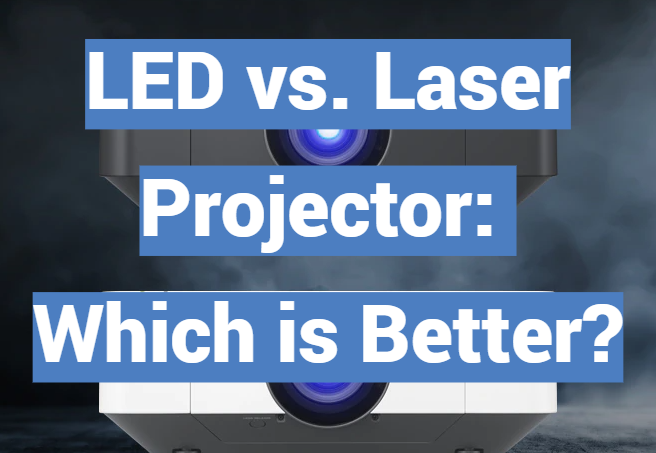
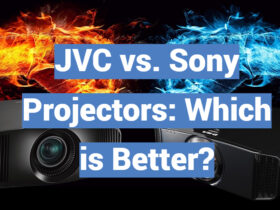
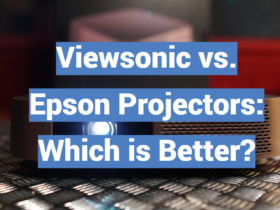
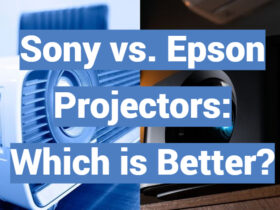
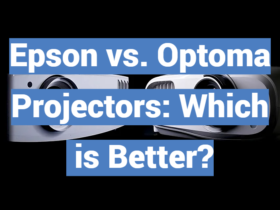
Leave a Review